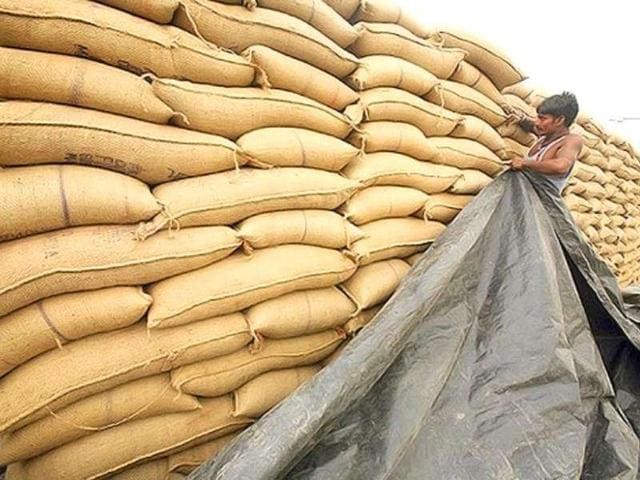
Buffer stock protects against the volatility that commonly characterizes inventory management. But what is buffer stock? In essence, it’s an intentional surplus of raw materials meticulously maintained to serve as a buffer against unforeseen shortages that could disrupt the seamless flow of the production process. The art of buffer stock revolves around a delicate balance—weighing the cost of holding excess inventory against the potential production downtime that can be averted through its presence.
Navigating the Balance: Buffer Stock in Action Picture a factory floor humming with activity, where the rhythm of production is punctuated by the arrival of raw materials. Here enters buffer stock, an insurance policy against the havoc that shortages can wreak on the orchestration of operations. The decision to retain buffer stock involves meticulous calculations, where the scales tip between the expenses incurred by housing extra inventory and the priceless mitigation of production halts.
However, the application of stock extends beyond the constraints of the production floor and into the domain of government regulations.
- The notion is used by governments to navigate the ebbs and flows of commodity markets.
- They become collectors in times of abundance, stockpiling extra items like a meticulously maintained treasury.
- And when the tide recedes, and supply levels dwindle, these stockpiles are judiciously released, a practice that tempers the fluctuations of commodity prices.
Guardians of Price Stability The underlying principle of buffer stock’s governmental responsibility is the protection of price stability. Just as a skilled conductor maintains the harmony of an orchestra, buffer stock orchestration ensures that commodity prices neither plummet to the abyss of abundance nor soar to the peaks of scarcity. The result? A symphony of stable pricing conditions that resonates through the corridors of supply chains.
- Buffer Stock’s Universality Buffer stock is a notion that can be found in a variety of settings, including oil fields, corn fields, and dairy farms.
- Its universality stems from its ability to traverse the tangled web of supply, demand, and equilibrium.
- Just as a ship steadies itself against the currents of a restless sea, buffer stock steadies markets against the turbulence of fluctuations.Buffer Stock: A Protection Against Uncertainty
Benefits of Buffer Stock:
- Risk Mitigation: Buffer stock acts as an insurance policy against supply chain disruptions, reducing the impact of unexpected shortages.
- Production Continuity: It helps prevent production downtime due to raw material shortages, ensuring seamless operations.
- Price Stabilisation: In the realm of commodities, buffer stock interventions maintain balanced prices, benefiting both producers and consumers.
- Governmental Role: Governments strategically utilise buffer stock to maintain stable markets, shielding their economies from abrupt price spikes or crashes.
In the grand tapestry of commerce, buffer stock weaves a thread of resilience. It exemplifies the human capacity to predict, strategize, and handle the inherent uncertainties of production and trade.Whether held by factories or guided by governments, buffer stock is a beacon of preparedness, ensuring that the wheels of production keep turning, the gears of commerce keep grinding, and the melody of stability continues to play on.

Table: Buffer Stock in Practice
| Application | Purpose | Outcome |
| Manufacturing | Avoid production interruptions | Uninterrupted operations |
| Commodity Markets | Price stabilisation during abundance | Controlled price fluctuations |
| Price stabilisation during scarcity | Mitigated price spikes | |
| Governmental Use | Maintain market stability | Economically balanced environments |
What is buffer stock Grade 9?
In the intricate tapestry of food security and economic stability, a vital thread is woven by the concept of buffer stock. This critical process ensures that the nation’s granaries are well-stocked, protecting against the volatility of agricultural production and market swings.. At its core, buffer stock emerges as a strategic reserve of essential foodgrains, particularly wheat and rice, meticulously procured by the government through the diligent efforts of the Food Corporation of India (FCI). This strategic reserve is nurtured by procuring surplus production from states, where the bountiful harvests have created a surplus. The organised purchase is carried out at a predetermined price, and it is a monument to the complexities of modern food management and economic forethought.
A Balancing Act of Agricultural Assurance: Buffer stock operates as a buffer, a shield that protects the nation’s food security, particularly in the face of the unpredictable ebbs and flows of agricultural production. Foodgrain availability, particularly staples like wheat and rice, is a key tenet of a stable society.
- However, the agricultural sector is intrinsically sensitive to natural disasters, which can cause swings in output levels.
- Buffer stock emerges as the counterweight, maintaining a delicate equilibrium by stepping in to mitigate the impact of erratic production patterns.
Government’s Role and FCI’s Expertise: The government, through its dedicated arm—the Food Corporation of India (FCI)—takes on the role of orchestrating this intricate dance of procurement and storage. FCI’s mandate includes more than just purchase; it also includes precise planning, precision in execution, and a long-term vision that spans both agricultural and economic landscapes. When states experience a surplus production of wheat and rice, FCI steps in to procure the excess, ensuring that the abundance does not go to waste and that it is harnessed to build a strategic reserve.
- Pre-Announced Price: Foresight and Stability: One of the defining features of buffer stock procurement lies in the utilization of a pre-announced price. This predetermined price serves as a beacon of stability in a market prone to volatility.
- By providing farmers with a consistent and fair price, the government not only encourages output but also fosters a sense of economic security within the agricultural community.
- This practise promotes consistency throughout the supply chain, from farm to table, ultimately benefiting customers.
A Symphony of Economic Resilience: The orchestration of buffer stock is akin to conducting a symphony, with different instruments playing their parts to create harmonious economic outcomes. On one hand, surplus production finds a purpose and contributes to building a robust reserve that can be drawn upon during times of scarcity.The promise of a fair price, on the other hand, increases agricultural productivity and strengthens the backbone of rural economies.As the government invests in buffer stock, it invests in the resilience of its citizens and the stability of its markets.
- A Shining Example of Economic Foresight: Buffer stock epitomizes the marriage of agricultural foresight and economic pragmatism. It demonstrates a government’s commitment to guaranteeing food security while also nurturing a stable and thriving agriculture industry.
- The cautious procurement and management of surplus output demonstrate the complexities of modern government, in which intricate economic systems are set in motion to attain a delicate equilibrium.
Finally, the concept of buffer stock extends beyond the mere accumulation of surplus foodgrains; it signifies a nation’s commitment to ensuring food security, stabilising markets, and bolstering economic resilience.The Food Corporation of India stands as the custodian of this critical operation, orchestrating the procurement of surplus production at pre-announced prices. Buffer stock’s intricate dance emphasises the significance of planning and strategy in modern food management, and its execution speaks to the complexity of balancing agricultural abundance and economic stability.






